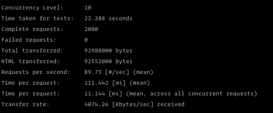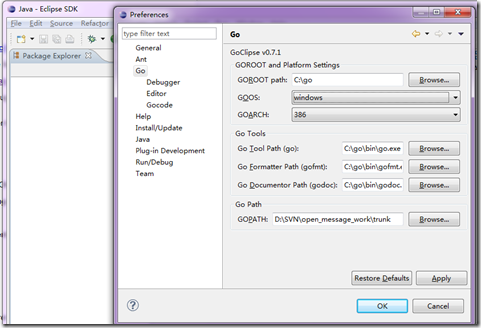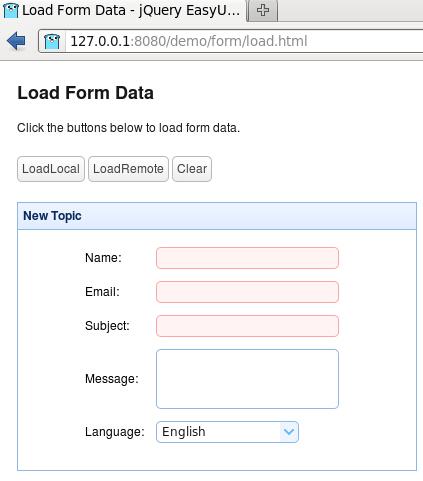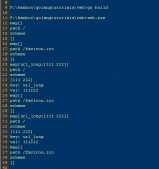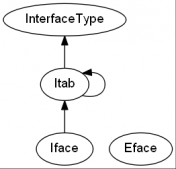1、启动go语言的协程
|
1
2
3
4
5
6
7
8
9
10
11
12
13
14
15
16
17
18
19
20
21
22
23
24
25
26
|
package main import ( "fmt" "runtime") //runtime包 func main() { //runtime.Gosched() 用于让出cpu时间片,让出这段cpu的时间片,让调度器重新分配资源 //写一个匿名函数 s := "test" go func(s string) { for i :=0;i <2;i++ { fmt.Println(s) } }(s) for i :=0;i <2;i ++ { //如果代码跑到这里,调度器会把cpu资源释放出来,让调度器重新分配cpu资源,可以分配到子协程,也可以重新分配到主协程 runtime.Gosched() fmt.Println("123") }} |
2、runtime.Goexit()方法。立即终止当前的协程
|
1
2
3
4
5
6
7
8
9
10
11
12
13
14
15
16
17
18
19
20
21
22
23
24
25
26
27
28
29
30
31
32
33
34
|
package main import ( "fmt" "runtime" "time") //runtime.Goexit() 立即终止当前的协程func main() { go func() { defer fmt.Println("A.defter") func () { defer fmt.Println("B.defter") //立即终止当前的协程,函数会走defer流程 runtime.Goexit() fmt.Println("B") }() fmt.Println("A") }() for { time.Sleep(2 * time.Second) }} //不加runtime.Goexit()的结果//B//B.defter//A//A.defter //加runtime.Goexit()的结果//B.defter//A.defter |
3、runtime.GOMAXPROCS()表示go使用几个cpu执行代码
|
1
2
3
4
5
6
7
8
9
10
11
12
13
14
15
16
|
package main import ( "fmt" "runtime") func main() { //runtime.GOMAXPROCS() 表示让go用几个cpu做后面的事情 n := runtime.GOMAXPROCS(4) fmt.Printf("%T--->%p---%d\n",n,n,n) for { go fmt.Print("0") fmt.Print(1) }} |
4、管道定义和创建管道
|
1
2
3
4
5
6
7
8
9
10
11
12
13
14
15
16
17
18
19
20
21
22
23
24
25
26
27
28
29
30
31
32
33
34
35
36
37
38
39
40
41
42
43
44
45
46
47
48
49
50
|
package main import "fmt" //go语言的协程运行在相同的地址空间,因此访问共享内存必须做好同步,处理好线程安全问题 //go语言的协程之间的通信通过协程间通信来共享内存,而不是共享内存来通信 //channel是一个引用类型,用于多个协程间通信,内部实现了同步,确保并发安全 //通道一般是结合协程一起使用 //如果通道中没有数据,后面你还去取数据,则会报错//fatal error: all goroutines are asleep - deadlock!func main() { //test45_1 := make(chan int) //定义一个无缓冲的通道 //无缓冲的通道是值在接受数据前没有任何能力保存数据,只能有一个数据进入通道,进入通道后,该通道就会加锁,一直到这个数据被取出,锁才释放 //无缓冲的通道有可能阻塞,如果我发送一个数据到通道,但是没有协程来取数据,则对于第一个协程就被阻塞 //test45_2 := make(chan int,10) //定义 一个有缓冲的通道 //有缓冲的通道就是通道可以存储指定数量的数据,数据在里面也是有顺序的,但是如果缓冲的数量满了,这个通道也会是阻塞的 // //test45_1 <- 10 //发送数据到通道 //<- test45_1 //接受通道中的数据,并丢弃 //x := <-test45_1 //从通道取值并赋值给x //x,ok := <-test45_1 //ok检查通道是否关闭或者是否为空 //1、创建一个存放int类型的通道 test45_1 := make(chan int) go func() { defer fmt.Println("子协程结束") fmt.Println("子协程正在运行") test45_1 <- 111 }() //<- test45_1 //主协程从通道中取数据 x := <- test45_1 fmt.Println(x) fmt.Println("主协程结束")} |
5、管道的缓冲
|
1
2
3
4
5
6
7
8
9
10
11
12
13
14
15
16
17
18
19
20
21
22
23
24
25
26
27
28
29
30
31
32
33
|
package main import ( "fmt" "time") func main() { //无缓冲的通道,长度为0就可以了,有缓冲的通道,这里设置为非0就可以了 test46_1 := make(chan int,0) //%P是打印内存地址,%T是打印变量的类型 //fmt.Printf("长度:%d--->容量:%d---->%P----%T",len(test46_1),cap(test46_1),test46_1,test46_1) go func() { defer fmt.Printf("子协程结束") for i :=0;i < 3;i ++ { fmt.Println("子协程插入数据") test46_1 <- i //fmt.Printf("长度:%d--->容量:%d---->%P----%T",len(test46_1),cap(test46_1),test46_1,test46_1) } }() time.Sleep(2 * time.Second) for j :=0;j <3;j++ { fmt.Println("主协程取数据") num := <- test46_1 fmt.Println(num) }} |
6、关闭管道和接受关闭管道的信号
|
1
2
3
4
5
6
7
8
9
10
11
12
13
14
15
16
17
18
19
20
21
22
23
24
25
26
27
28
29
30
31
32
33
|
package main import "fmt" //close()方法,关闭通道的意思 func main() { test47_1 := make(chan int,4) go func() { for i :=0;i < 10;i ++ { test47_1 <- i } //这个的意思关闭通道test47_1 close(test47_1) }() //for的写法,遍历通道 //for { // //子协程关闭了通道,这里ok就可以接收到,这里就可以走到bread流程,ok这个参数表示通道是否关闭 // if data,ok := <- test47_1;ok { // fmt.Println(data) // }else { // break // } //} //range的写法,遍历通道 for data := range test47_1 { fmt.Println(data) } fmt.Println("主协程结束")} |
7、只读管道和只写管道和生产者和消费者模型
|
1
2
3
4
5
6
7
8
9
10
11
12
13
14
15
16
17
18
19
20
21
22
23
24
25
26
27
28
29
30
31
32
33
34
35
36
37
38
39
40
41
42
43
44
45
46
47
48
49
50
51
52
53
54
55
56
57
58
59
60
61
62
63
64
|
package main import ( "fmt" "time") //默认情况下,管道是双向的,既可以写入数据,也可以读出数据。go也可以定义单方向的管道,也就是说只发送数据,或者只写入数据 //可以把双向的管道转换为单向的管道,但是不能把单向的管道转换为双向的管道 //单方向的管道 func producter(out chan <- int) { defer close(out) for i := 0;i < 10;i++ { out <- i } } func consumer(int <-chan int){ for num := range int { fmt.Println(num) }}func main() { //1、定义管道 //定义一个正常的管道 //var test48_1 chan int //定义一个单向的只写的管道 //var test48_2 chan <- float32 //定义一个单向的只读的管道 //var test48_3 <- chan int //2、转换管道 //转换正常管道为只写或者只读的管道 //定义一个正常的管道 //test48_4 := make(chan int,3) //把一个正常的管道转换为一个只写的管道 //var write_only chan <- int = test48_4 //把一个正常的管道转换为一个只读的管道 //var read_only <- chan int = test48_4 test48_5 := make(chan int,4) //启动生产者 go producter(test48_5) //启动消费者 consumer(test48_5) time.Sleep(10 * time.Millisecond) fmt.Println("down") } |
8、Timer定时器
|
1
2
3
4
5
6
7
8
9
10
11
12
13
14
15
16
17
18
19
20
21
22
23
24
25
26
27
28
29
30
31
32
33
34
35
36
37
38
39
40
41
42
43
44
45
46
47
48
49
50
51
52
53
54
55
56
57
58
59
60
61
62
63
64
65
66
67
68
69
70
71
72
73
74
|
package main import ( "fmt" "time") //定时器 //time.NewTimer()。时间到了,只执行一次//time.NewTicker(),周期性的执行 func main() { //1、创建一个定时器,2s后定时器会将一个时间保存到一个C test49_1 := time.NewTimer(2 * time.Second) //打印系统当前的时间 t1 := time.Now() fmt.Printf("t1----->%v\n",t1) //从管道中取出C打印 t2 := <- test49_1.C fmt.Printf("t2----->%v\n",t2) //2、证明timer只执行一次 //test49_2 := time.NewTimer(4 * time.Second) // //for { // c := <- test49_2.C // fmt.Println(c) //} //3、通过timer实现一个延时的功能 //方式1 //time.Sleep(2 * time.Second) //方式2 //test49_3 := time.NewTimer(2 * time.Second) //方式3 //<-time.After(2 *time.Second) //4、停止定时器 test49_4 := time.NewTimer(4 * time.Second) //子协程 go func() { //这个意思是3s后才能取出来数据 <- test49_4.C fmt.Println("定时器时间到了") }() //关闭定时器 stop := test49_4.Stop() if stop { fmt.Println("定时器已经关闭") } //5、重置定时器 test49_5 := time.NewTimer(4 * time.Second) //重置定时器为1s test49_5.Reset(1 * time.Second) for { } } |
9、ticker定时器和关闭ticker定时器
|
1
2
3
4
5
6
7
8
9
10
11
12
13
14
15
16
17
18
19
20
21
22
23
24
25
26
27
|
package main import ( "fmt" "time") //time.NewTicker(),定时器,响应多次 func main() { //创建一个定时器,间隔1s test50_1 := time.NewTicker(time.Second) i := 0 go func() { for { c := <- test50_1.C fmt.Println(c) i ++ fmt.Println(i) } }() for { }} |
10、select语句
|
1
2
3
4
5
6
7
8
9
10
11
12
13
14
15
16
17
18
19
20
21
22
23
24
25
26
27
28
29
30
31
32
33
34
35
36
37
38
39
40
41
42
43
44
45
46
|
package main import ( "fmt") //go语言提供select关键字,用来监听通道上的数据流动,语法和switch类似,区别是select必须要求每个case语句里必须是一个IO操作 //如果都能匹配到,则随机选择一个通道去跑,select是比较随便的 func main() { //test51_1 := make(chan int,3) //select { //case <- test51_1: // fmt.Println("jja") ////如果从通道中可以读出数据,则执行这里 //case test51_1 <- 1: // fmt.Println("aa") ////如果通道中北写入数据,则执行号这里 //default: // fmt.Println("hah") ////如果上面都没成功,则执行这里 //} test51_1 := make(chan int,1) test51_2 := make(chan string,1) go func() { //time.Sleep(2 * time.Second) test51_1 <- 1 }() go func() { test51_2 <- "Hello World" }() select { case Value1:= <- test51_1: fmt.Println(Value1) case Value2 := <- test51_2: fmt.Println(Value2) } fmt.Println("结束") } |
11、协程同步锁
|
1
2
3
4
5
6
7
8
9
10
11
12
13
14
15
16
17
18
19
20
21
22
23
24
25
26
27
28
29
30
31
32
33
34
35
36
37
38
39
40
41
42
43
44
45
46
47
48
49
50
51
52
53
54
55
56
57
58
59
60
61
|
package main import ( "fmt" "sync" "time") //go语言的协程同步锁,解决并发安全问题 //取钱的例子 type Account struct { money int flag sync.Mutex} func Check(a *Account) { time.Sleep(1 * time.Second)} func (a *Account)SetAccount(n int) { a.money = n} func (a *Account)GetAccount() (n int) { return a.money} func (a *Account) buy1(n int) { a.flag.Lock() if a.money > n { Check(a) a.money -= n } a.flag.Unlock() fmt.Println(a.money)} func (a *Account) buy2(n int) { a.flag.Lock() if a.money > n { Check(a) a.money -= n } a.flag.Unlock() fmt.Println(a.money)} func main() { var test52_1 Account test52_1.SetAccount(10) go test52_1.buy1(5) go test52_1.buy2(6) for { }} |
12、wait
我们自己实现wait
|
1
2
3
4
5
6
7
8
9
10
11
12
13
14
15
16
17
18
19
20
21
22
23
24
25
26
|
package main import "fmt"//Add() 计数加1//Done() 计数减1//Wait() 主函数调用func main() { test53_1 := make(chan int,2) count := 2 go func() { fmt.Println("子协程1") test53_1 <- 1 }() go func() { fmt.Println("子协程2") test53_1 <- 2 }() for range test53_1 { count -- if count == 0 { fmt.Println("所有的子协程都已经结束") close(test53_1) } }} |
go语言为我们实现wait
|
1
2
3
4
5
6
7
8
9
10
11
12
13
14
15
16
17
18
19
20
21
22
23
24
25
26
27
28
29
30
31
32
|
package main import ( "fmt" "sync")//Add() 计数加1//Done() 计数减1//Wait() 主函数调用func main() { var wait_group sync.WaitGroup //这里就是子协程的个数 wait_group.Add(2) //test54_1 := make(chan int,2) go func() { fmt.Println("子协程1") wait_group.Done() }() go func() { fmt.Println("子协程2") wait_group.Done() }() wait_group.Wait() //close(test53_1) fmt.Println("所有的子协程都结束") } |
以上就是详解go语言的并发的详细内容,更多关于go语言的并发的资料请关注服务器之家其它相关文章!
原文链接:https://www.cnblogs.com/bainianminguo/p/10915184.html



